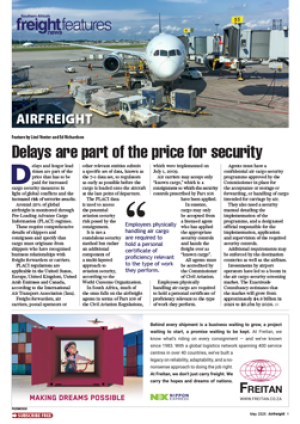When Lesotho announced its
intentions early this year
to develop a rail system
to enable the country to act as a
transhipment point for SA goods,
transport officials cited the success of
Swaziland Railway making Swaziland
an important transhipment point for SA
cargo moving from west to east and
back. SA cargo can also be switched
northeast to Maputo via Swaziland.
“We are geared to move bulk cargo,
with our specialised wagons or in
containers,” said Stephenson Ngubane,
director of operations at Swaziland
Railway.
Ngubane noted that moving bulk
cargo by rail was still the most
economical way to transport such
material as coal, sugar and textile
inputs from Durban to Swazi factories.
Timber and paper pulp are also moved
by a rail system originally designed
to transport iron ore to the sea
via Maputo.
Swaziland Railways leases five
locomotives from Transnet Freight
Rail and owns its own oil wagons.
The country imports all its petroleum
products via SA, thus making this
commodity an important cargo for the
railway. The company uses its own
sugar wagons to move Swaziland’s top
agricultural export and general wagons
for other goods, most importantly
cement and wheat imports.
The railway’s expanding Matsapha
Inland Clearance Depot has seen
volumes rise from 2 500 TEUs early
this decade to 15 000 TEUs annually.
Transhipment of SA goods remains
a profitable business for the railway
because Swaziland offers Gauteng
shippers a 270km “shortcut,”
diminishing by three days transit time
compared to other routes to Durban.
Transhipments are big business for Swazi Rail
25 Nov 2009 - by James Hall
0 Comments
Africa Outlook 2009

25 Nov 2009
25 Nov 2009
25 Nov 2009
25 Nov 2009
25 Nov 2009
25 Nov 2009
Border Beat
Featured Jobs
New
